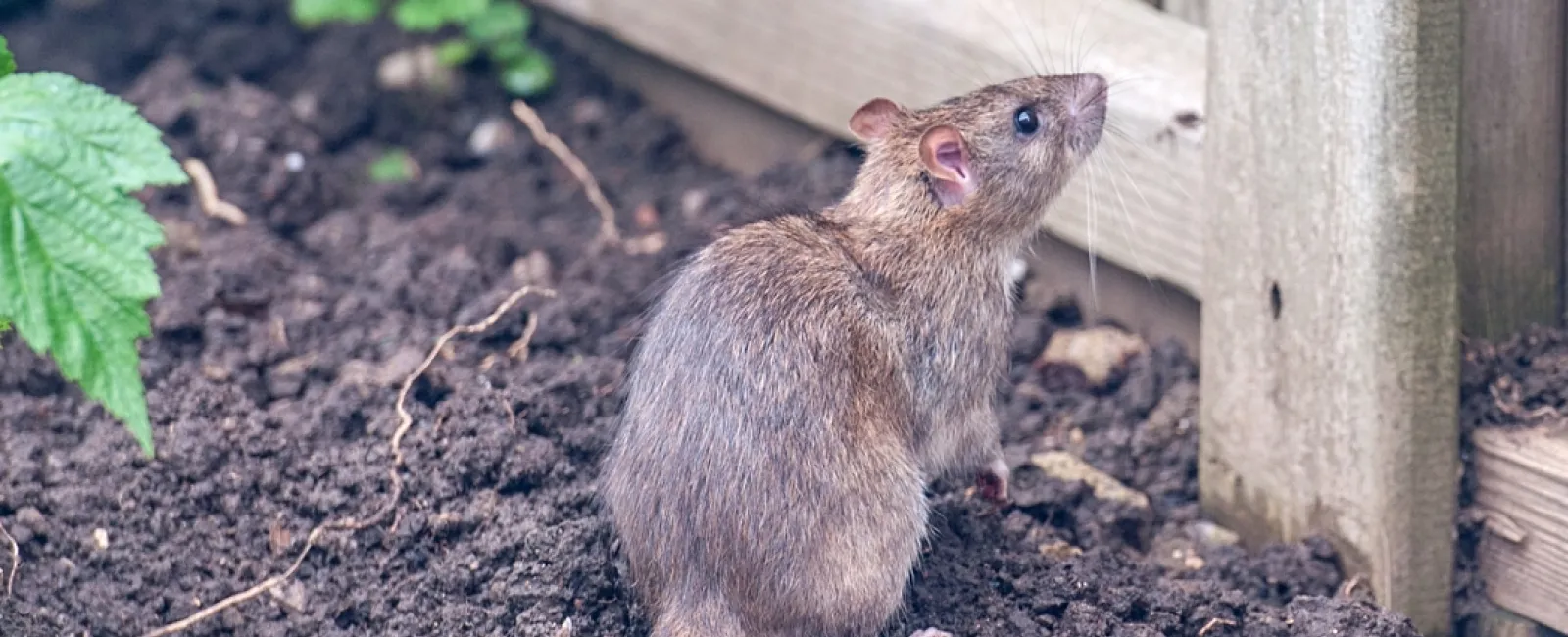After our last blog post, "How to Tell If Your Home Has Mice," we had a lot of customers ask us a similar question: how can I tell if my home has rats? While rat infestations and mouse infestations share a lot of similarities, there are some key differences that can help you determine that rats have invaded your home.
Here's how to know you're dealing with a rat issue on your property.
1. You see rats.
If left unchecked, rats can get pretty bold and may even allow you to see them. Like mice, rats are nocturnal, so they tend to be most active at night. This is when you're most likely to see them running along garden walls, sniffing around trash cans, or scurrying out from under a sink.
Rats tend to be much larger and longer than mice, measuring up to 18 inches long (tail included). Mice typically don't grow longer than 4 inches total.
2. You discover rodent runways.
Once rats find a route they like to get to food, they will continue to use that route, so much that they start to leave evidence behind of their travels. Outdoors, you may notice places where your grass or mulch now has a little path running through it. Indoors, you might see greasy smudges along the floor right next to your walls. These are signs of frequent rodent travel in these locations.
3. You find droppings around your home or yard.
Rat droppings tend to be dark brown and pill-shaped, and they're typically about ½ to ¾ of an inch long. You can find rat droppings just about anywhere, but you're most likely to find them in more secluded areas, such as cabinets, pantries, attics, below sinks, and on rodent runways.
4. Your home smells like ammonia.
Rats piddle almost constantly. For rats, peeing isn't just a bodily need: it's actually a form of communication and a way to self-soothe. They use their urine to communicate things like their reproductive status to other rats or even to mark food as safe to consume. They'll also mark their surroundings with their urine to make it smell more familiar and comforting.
Unfortunately, this behavior can take a smelly toll on your home. Rat urine can make your home wreak with an acrid, ammonia-like odor that's hard to remove.
5. You find evidence of gnawing.
Just like mice, rats need to chew incessantly to keep their incisors filed down. Just about any object can become a target, including furniture, wood beams, electrical wires, and fiberglass ductwork. If you see teeth marks on any surface in your home, it's time to call a pest expert.
Sustainable Rat Control Solutions
A rat infestation can jeopardize your home's hygiene and open the door to a number of health risks. At Greenix Pest Control, we use a specialized rodent treatment process to tackle tough infestations and ensure lasting protection from rats. Schedule your appointment by calling our team today.

